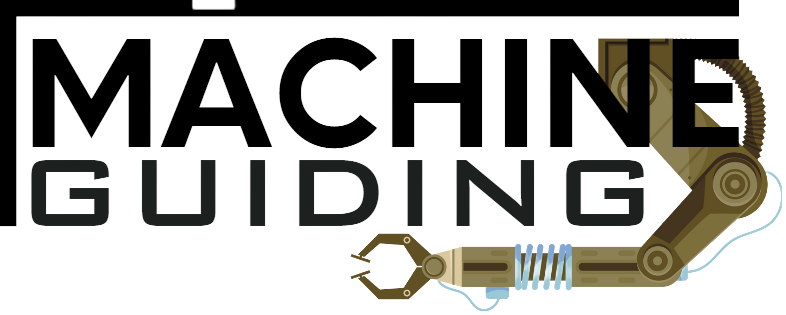Machine Vision in Robotics is a game-changing technology transforming industries and paving a more automated future. This article explores the incredible impact of machine vision in robotics and how it is reshaping the automation landscape.
How Machine Vision Enhances Robotic Perception
Machine vision is critical in enhancing robotic perception, enabling robots to effectively understand and interact with their environment. Machine vision in robotics captures and processes visual data through advanced imaging techniques and machine learning algorithms, providing robots with valuable information to make informed decisions. Integrating machine vision and robotics with embedded technology has led to the development of collaborative robots that can work alongside humans, increasing productivity and safety in the workplace.
Object Recognition and Tracking
One of the key capabilities that machine vision brings to robotics is object recognition and tracking. With Machine Vision in Robotics, robots can now recognize and differentiate between objects, allowing them to perform tasks that previously required human intervention. Machine vision algorithms can identify and track objects in real-time by analyzing visual data, enabling robots to locate and manipulate them precisely. This ability is particularly useful in manufacturing and logistics, where robots can autonomously pick and place objects on assembly lines or warehouses.
Depth Perception and 3D Vision
Machine vision in robotics allows machines to perceive depth and understand the three-dimensional structure of their surroundings. By employing techniques like stereo vision or structured light, robots equipped with machine vision can accurately gauge distances and recognize spatial relationships. This capability is invaluable in tasks such as bin picking, where robots must grasp objects from cluttered environments.
Quality Inspection and Defect Detection
Machine Vision in Robotics has revolutionized the manufacturing industry by providing robots with eyesight, allowing them to perform complex tasks more accurately and efficiently. Machine vision systems are adept at performing quality inspection and defect detection in manufacturing processes. With high-resolution cameras and intelligent algorithms, robots can identify defects, measure dimensions, and ensure products meet stringent quality standards. By automating these inspection tasks, machine vision eliminates human error, increases throughput, and reduces production costs.
Gesture and Facial Recognition
Machine vision technology enables robots to recognize and interpret human gestures and facial expressions. This capability significantly impacts human-robot interaction, allowing robots to understand human commands and emotions. From collaborative robots working alongside humans on the assembly line to service robots in healthcare settings, machine vision empowers robots to interact naturally with people.
Advantages of Integrating Machine Vision in Robotics
Machine Vision in Robotics has enabled robots to perform previously impossible tasks, such as identifying and sorting recyclable materials. Integrating machine vision and robotics offers numerous advantages that have revolutionized industry automation processes. Let’s explore some key benefits.
Increased Efficiency and Productivity
By leveraging machine vision capabilities, robots can perform tasks quickly, precisely, and consistently. They can operate 24/7 without fatigue or errors, increasing productivity and throughput. Moreover, machine vision allows robots to adapt to changing environments, optimizing their workflow and minimizing downtime. Machine Vision in Robotics has enabled robots to perform quality control tasks with greater accuracy and consistency, reducing defects and improving product quality.
Improved Safety and Risk Mitigation
Integrating machine vision with robotics enhances safety in various ways. Robots with machine vision can detect and avoid obstacles, preventing collisions and accidents. Furthermore, machine vision systems can monitor hazardous environments and provide early warnings, ensuring worker safety and reducing occupational risks.
Enhanced Quality Control
Quality control is critical in manufacturing, and machine vision plays a vital role in automating this process. By inspecting products at high speeds and precision, computer vision systems identify defects that human inspectors might miss, leading to improved product quality, reduced rework, and enhanced customer satisfaction. Using Machine Vision in Robotics has opened up new possibilities for automation in the automotive and healthcare industries.
Cost Savings and Return on Investment
While the initial investment in integrating machine vision and robotics may seem substantial, the long-term benefits outweigh the costs. Increased efficiency, improved quality control, and reduced labor expenses result in significant cost savings over time—additionally, the enhanced productivity and quality lead.
Conclusion
Machine vision has emerged as a game-changer in robotics, revolutionizing industry automation processes. By providing robots with the ability to see and interpret visual data, machine vision enhances accuracy, increases efficiency, reduces costs, and improves safety. Machine vision applications in robotics, such as quality inspection, pick and place operations, object tracking, and navigation, are transforming the way automation is carried out. As Machine Vision in Robotics advances, we can expect robots to take on more complex tasks, such as performing surgery or assisting with disaster relief efforts.















